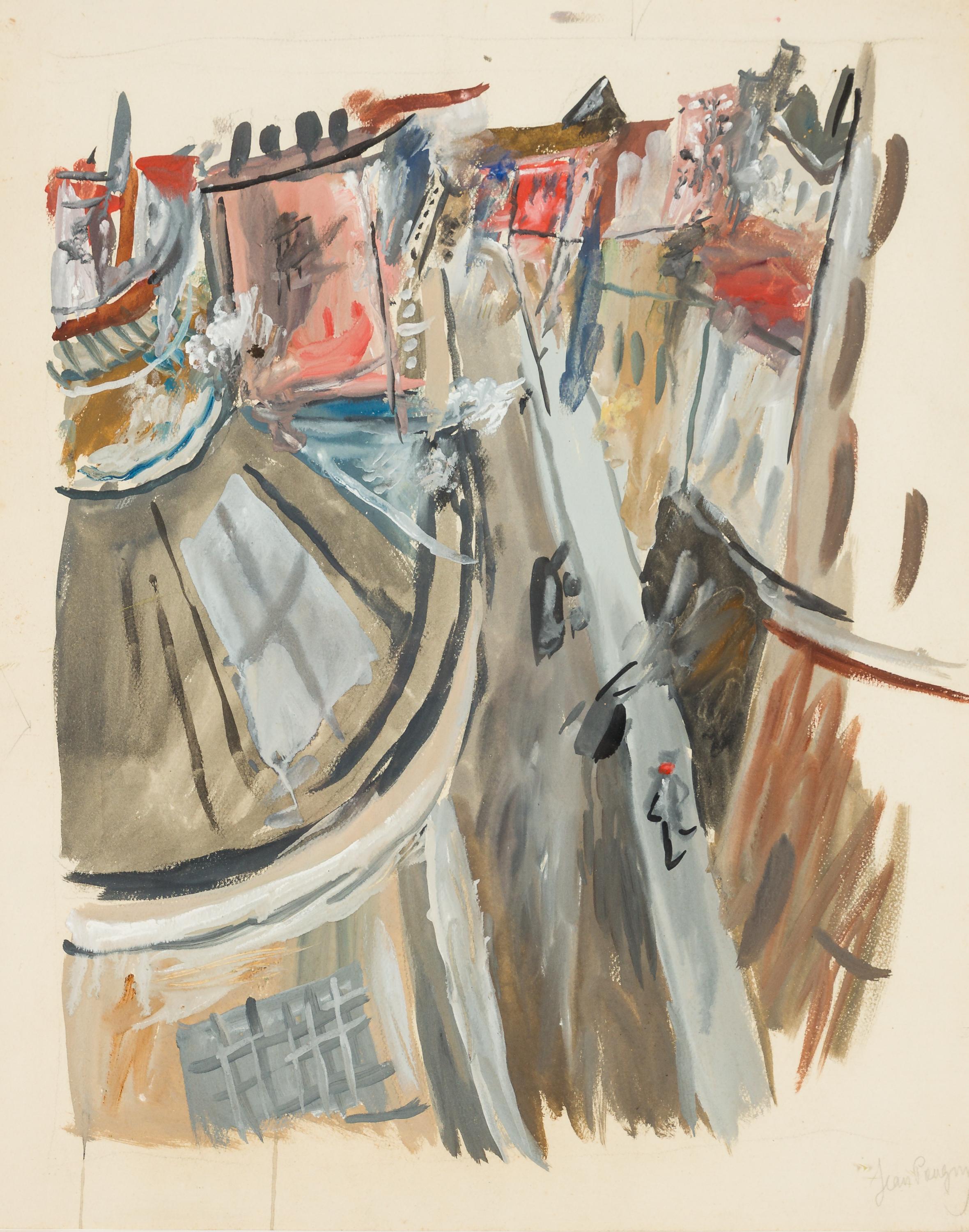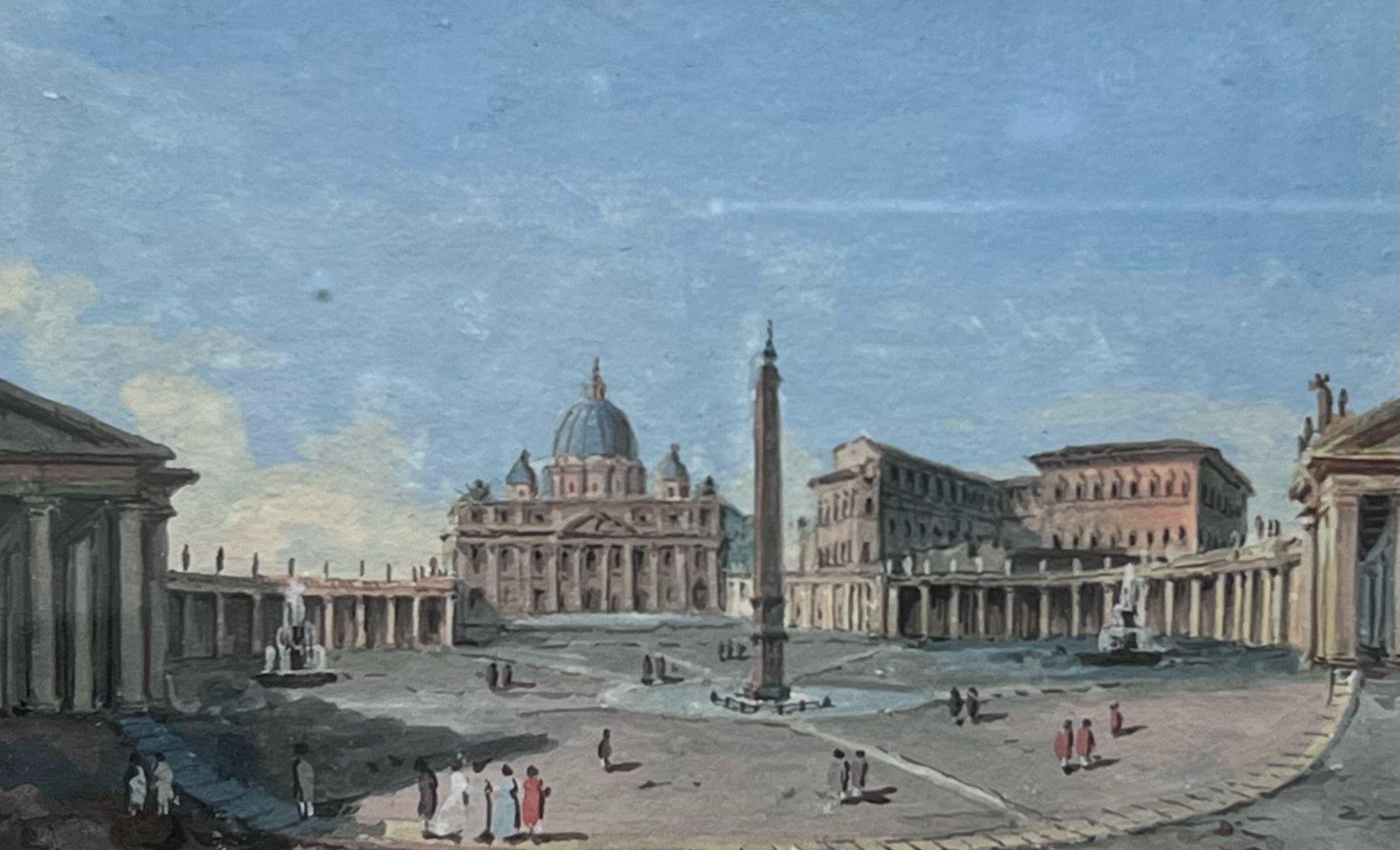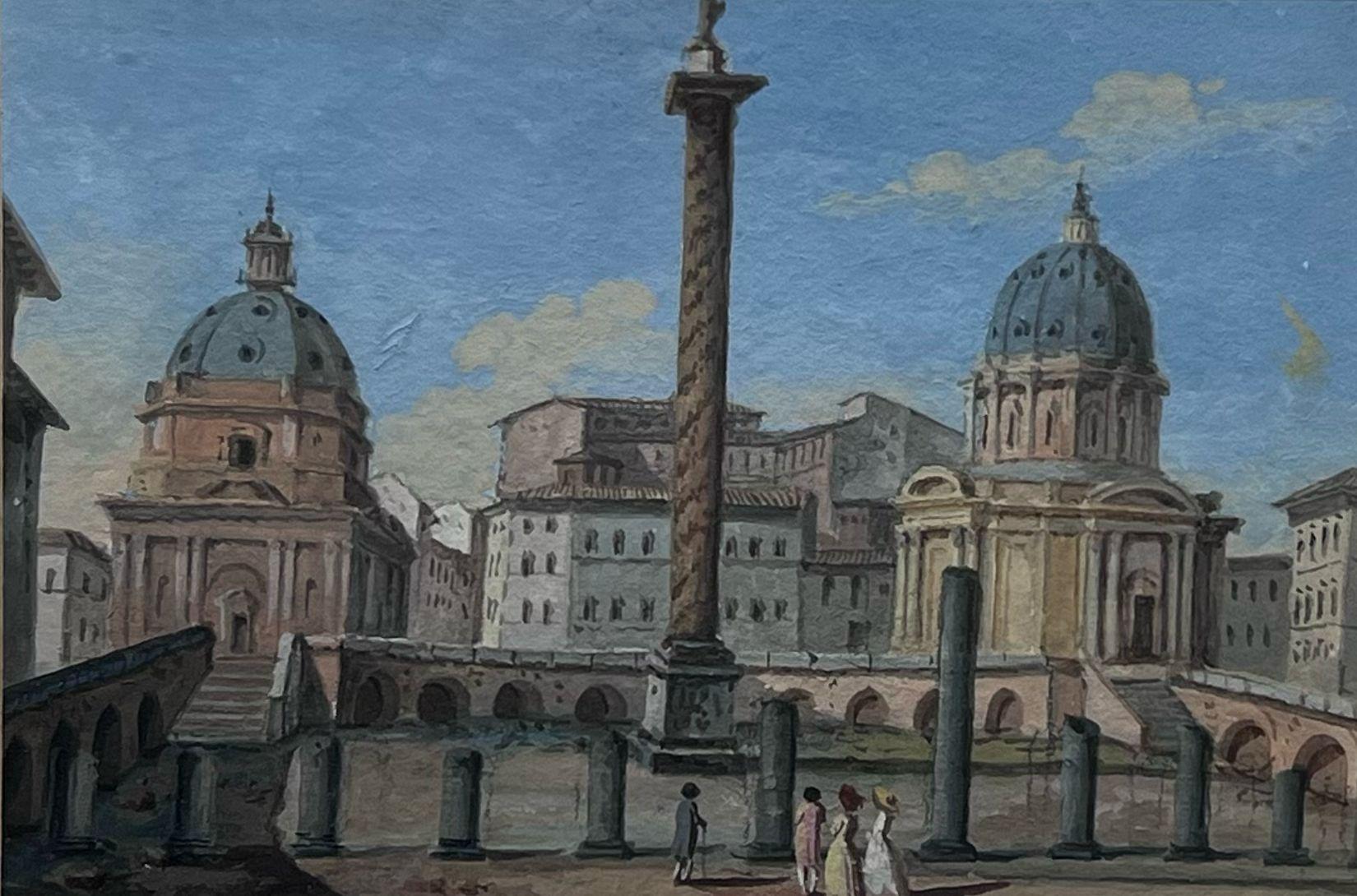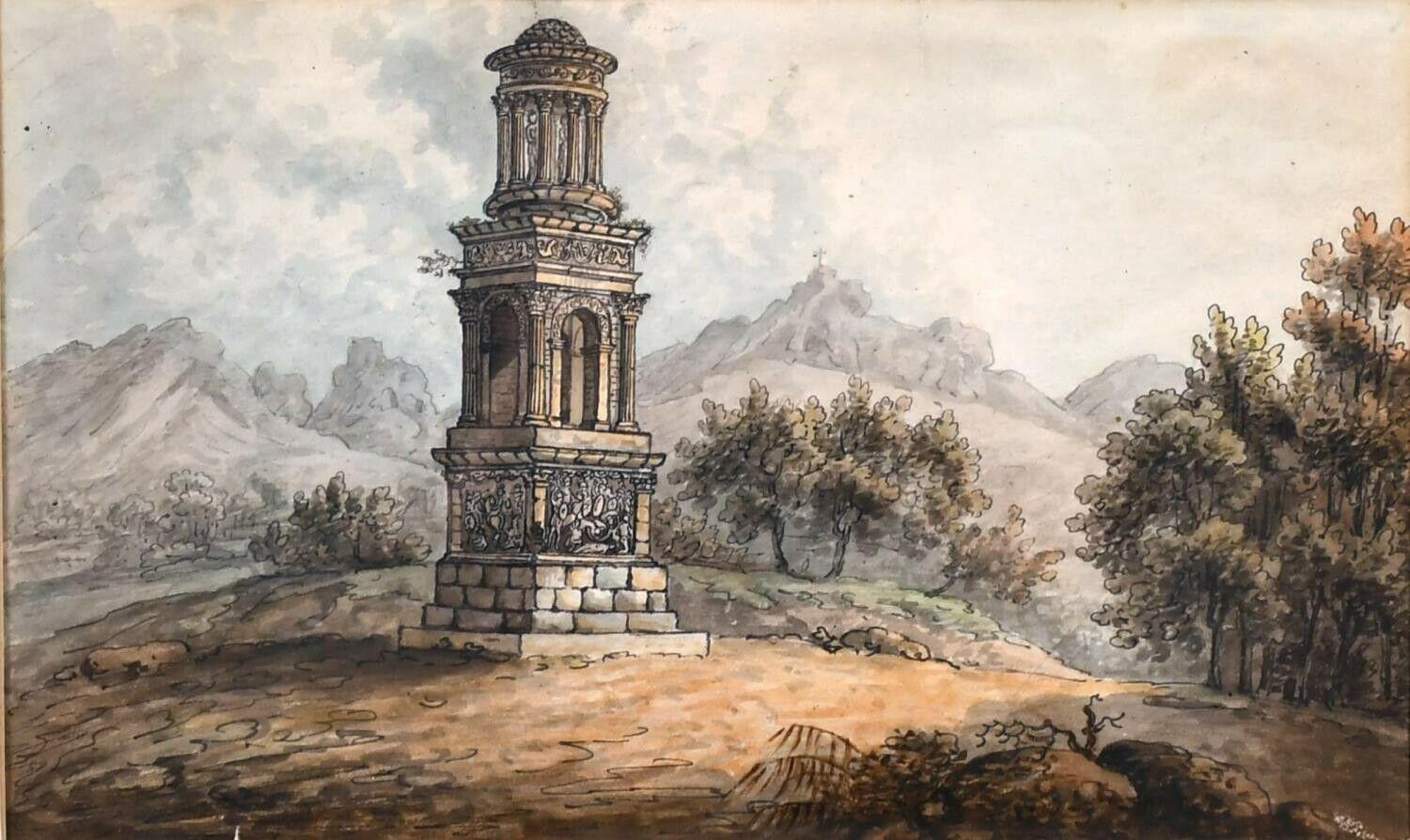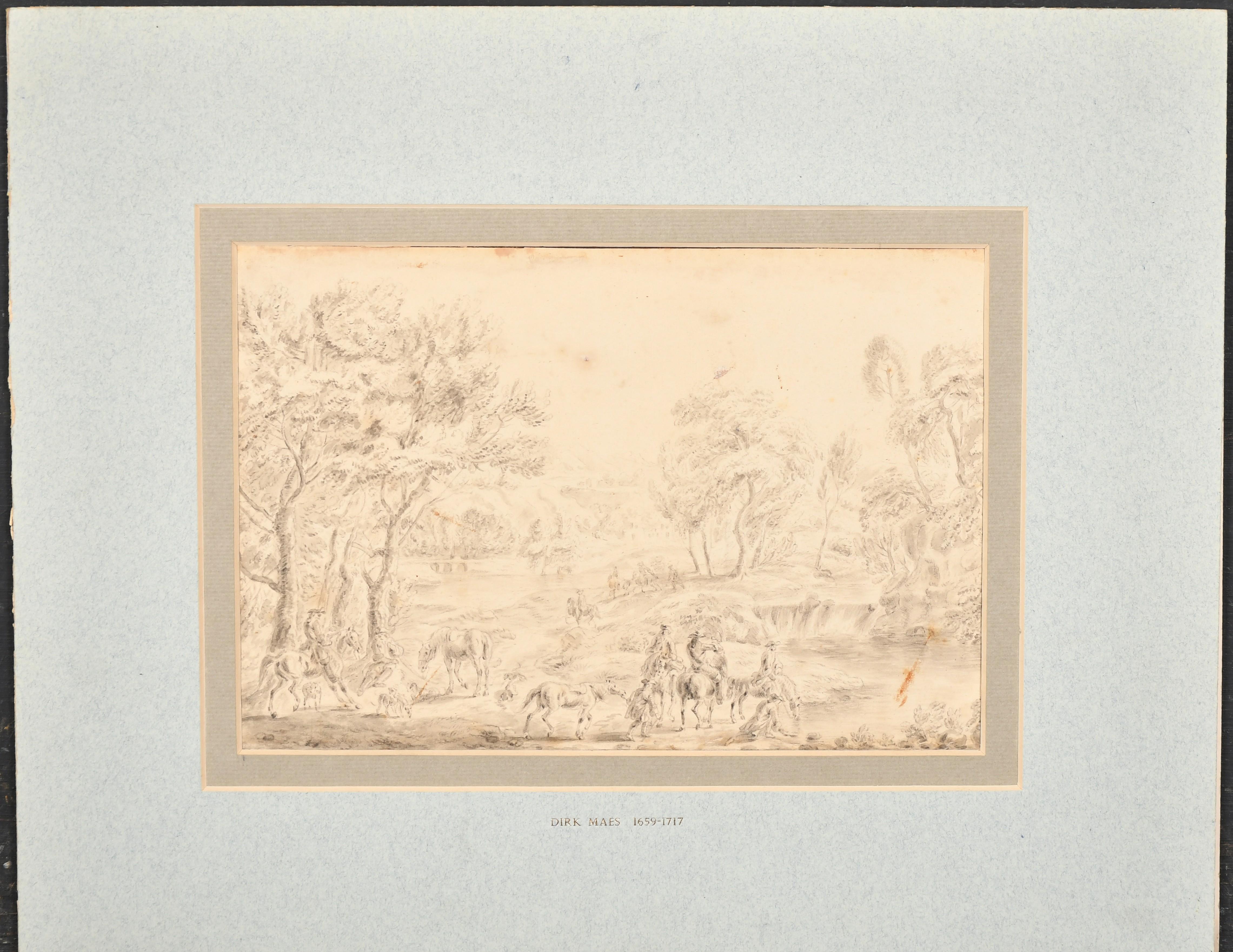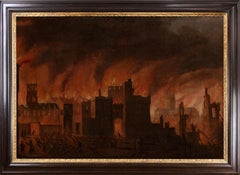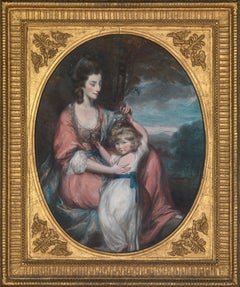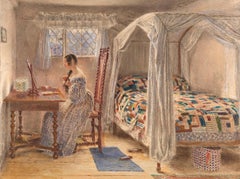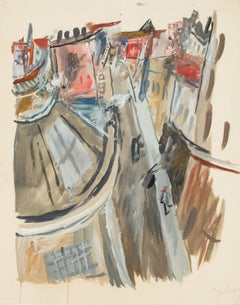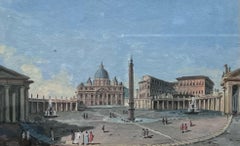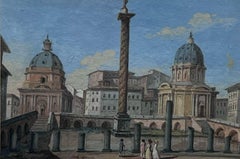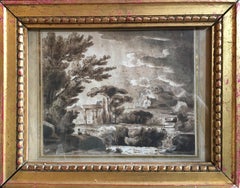Items Similar to 18th century view of the Elephant and Castle in London
Want more images or videos?
Request additional images or videos from the seller
1 of 5
James Miller18th century view of the Elephant and Castle in LondonCirca 1780
Circa 1780
About the Item
Collections:
With Martyn Gregory;
Judy Egerton, 1984, acquired from the above;
By descent to 2014.
Exhibited:
London, Martyn Gregory, Exhibition of English & Continental Watercolours, 1984, no. 94.
London, Lowell Libson Ltd, British Watercolours, 2014, no. 1.
Framed dimensions: 14.25 x 18.50 inches
This beautifully preserved work depicts the original coaching inn: The Elephant and Castle. It appears to be the earliest surviving depiction of the establishment which lends the roundabout and the surrounding district in Newington its name. Showing the view due north with St Paul’s Cathedral in the distance, Miller’s characteristic interest in the incidental detail of London life means that the scene is animated with beggars, a coach arriving at the Inn, a woman trying to herd sheep pursued by a barking dog and the Inn itself which is shown under renovation with all the paraphernalia of a London construction site (sand, spades, scaffolding and wagons). As a highly evocative image of south London made in the 1780s and the earliest recorded depiction of one of the most celebrated coaching inns on the periphery of London, this is a significant as well as compelling view and an important addition to James Miller’s limited oeuvre.
Miller probably worked with Paul Sandby and the present, carefully composed drawing, filled with animated incidental detail clearly shows Sandby’s influence. Miller exhibited London views extensively at both the Royal Academy between 1781 and 1788 and the Society of Artists. At the latter, in particular, Miller exhibited a number of views of south London, including: ‘A view taken from Lambeth church yard’ in 1775 (no.149) and ‘a view of Battersea Bridge’ the following year (no.242). Miller’s most famous surviving works is the fine view of Cheyne Walk preserved in the Victoria and Albert Museum and an album of drawings which were formerly in the collection of Dudley Snelgrove.
- Creator:James Miller (1773 - 1814, English)
- Creation Year:Circa 1780
- Dimensions:Height: 7 in (17.78 cm)Width: 12 in (30.48 cm)
- Medium:
- Movement & Style:
- Period:
- Condition:The gouache and vellum are preserved in excellent condition. Housed in a giltwood frame.
- Gallery Location:London, GB
- Reference Number:1stDibs: LU150727729552
About the Seller
5.0
Recognized Seller
These prestigious sellers are industry leaders and represent the highest echelon for item quality and design.
1stDibs seller since 2021
- ShippingRetrieving quote...Shipping from: London, United Kingdom
- Return Policy
Authenticity Guarantee
In the unlikely event there’s an issue with an item’s authenticity, contact us within 1 year for a full refund. DetailsMoney-Back Guarantee
If your item is not as described, is damaged in transit, or does not arrive, contact us within 7 days for a full refund. Details24-Hour Cancellation
You have a 24-hour grace period in which to reconsider your purchase, with no questions asked.Vetted Professional Sellers
Our world-class sellers must adhere to strict standards for service and quality, maintaining the integrity of our listings.Price-Match Guarantee
If you find that a seller listed the same item for a lower price elsewhere, we’ll match it.Trusted Global Delivery
Our best-in-class carrier network provides specialized shipping options worldwide, including custom delivery.More From This Seller
View AllEarly oil depicting the Great Fire of London
Located in London, GB
The Great Fire of London in September 1666 was one of the greatest disasters in the city’s history. The City, with its wooden houses crowded together in narrow streets, was a natural fire risk, and predictions that London would burn down became a shocking reality. The fire began in a bakery in Pudding Lane, an area near the Thames teeming with warehouses and shops full of flammable materials, such as timber, oil, coal, pitch and turpentine. Inevitably the fire spread rapidly from this area into the City. Our painting depicts the impact of the fire on those who were caught in it and creates a very dramatic impression of what the fire was like. Closer inspection reveals a scene of chaos and panic with people running out of the gates. It shows Cripplegate in the north of the City, with St Giles without Cripplegate to its left, in flames (on the site of the present day Barbican). The painting probably represents the fire on the night of Tuesday 4 September, when four-fifths of the City was burning at once, including St Paul's Cathedral. Old St Paul’s can be seen to the right of the canvas, the medieval church with its thick stone walls, was considered a place of safety, but the building was covered in wooden scaffolding as it was in the midst of being restored by the then little known architect, Christopher Wren and caught fire. Our painting seems to depict a specific moment on the Tuesday night when the lead on St Paul’s caught fire and, as the diarist John Evelyn described: ‘the stones of Paul’s flew like grenades, the melting lead running down the streets in a stream and the very pavements glowing with the firey redness, so as no horse, nor man, was able to tread on them.’
Although the loss of life was minimal, some accounts record only sixteen perished, the magnitude of the property loss was shocking – some four hundred and thirty acres, about eighty per cent of the City proper was destroyed, including over thirteen thousand houses, eighty-nine churches, and fifty-two Guild Halls. Thousands were homeless and financially ruined. The Great Fire, and the subsequent fire of 1676, which destroyed over six hundred houses south of the Thames, changed the appearance of London forever. The one constructive outcome of the Great Fire was that the plague, which had devastated the population of London since 1665, diminished greatly, due to the mass death of the plague-carrying rats in the blaze.
The fire was widely reported in eyewitness accounts, newspapers, letters and diaries. Samuel Pepys recorded climbing the steeple of Barking Church from which he viewed the destroyed City: ‘the saddest sight of desolation that I ever saw.’ There was an official enquiry into the causes of the fire, petitions to the King and Lord Mayor to rebuild, new legislation and building Acts. Naturally, the fire became a dramatic and extremely popular subject for painters and engravers. A group of works relatively closely related to the present picture have been traditionally ascribed to Jan Griffier...
Category
17th Century Old Masters Landscape Paintings
Materials
Canvas, Oil
18th century pastel portrait of Lady Augusta Corbett and her son, Stuart
By Daniel Gardner
Located in London, GB
Collections:
Commissioned by Andrew Corbett, husband of the sitter;
The Venerable Stuart Corbett;
Sir Stuart Corbett;
By descent to 2002;
Sotheby’s, London 21 March 2002, lot.104;
Lowell Libson...
Category
18th Century Old Masters Portrait Drawings and Watercolors
Materials
Gouache, Pastel
Portraits of the Hon. Mary Shuttleworth and Anna Maria, 9th Baroness Forrester
By Daniel Gardner
Located in London, GB
THE HON. MARY SHUTTLEWORTH, NÉE COCKBURN (D. 1777)
and her sister
ANNA MARIA, 9TH BARONESS FORRESTER (D. 1808)
Pastel and gouache on paper laid on canvas, on their original backb...
Category
18th Century Old Masters Portrait Drawings and Watercolors
Materials
Gouache, Pastel
19th century watercolour of a Girl at her Dressing Table
By William Henry Hunt
Located in London, GB
Collections:
Muir Hetherington;
Sir John and Lady Witt, acquired 1974;
By descent to 2015.
Literature:
Tom Jones (ed.), William Henry Hunt 1790-1864, exh. cat., 1981, no. 145 (Girl in a bedroom);
John Witt, William Henry Hunt (1790-1864) Life and Work, London, 1982, no. 553, p. 194, colour pl. 16.
Exhibited:
Wolverhampton, Central Art Gallery, Preston, Harris Museum and Art Gallery and Hastings, Hastings Museum and Art Gallery, William Henry Hunt 1790-1864, 1981, no. 145 as Girl in a bedroom (Lent by Sir John & Lady Witt)
Framed dimensions: 20 x 20.75 inches
This unusually charming and well-preserved watercolour was painted by William Henry Hunt in around 1833. Almost certainly depicting his young wife, Sarah, possibly in the interior of her family home at Bramley in Hampshire. This work shows Hunt’s remarkable virtuosity as a watercolourist, Hunt, for example, articulates the profile of his young wife, by leaving a reserve of white paper to suggest the light modelling her features. Throughout the 1830s Hunt made a sequence of richly painted interior views of both domestic and agricultural spaces which pay scrupulous attention to detail.
Hunt was born in London, the son of a tin-plate worker and japanner. J. L. Roget recorded the observation of Hunt’s uncle: ‘nervy, little Billy Hunt… was always a poor cripple, and as he was fit for nothing, they made an artist of him.’ At the age of sixteen he was apprenticed to the landscape painter John Varley for seven years, moving to live with Varley at 18 Broad Street, Golden Square, London. There he made close friends with both John Linnell and William Mulready. Hunt worked at the ‘Monro Academy’, at 8 Adelphi Terrace, London, the house of Dr Thomas Monro, an enthusiastic patron of landscape watercolourists. Through Monro, Hunt was introduced to the 5th Earl of Essex...
Category
19th Century Old Masters Figurative Drawings and Watercolors
Materials
Pencil, Watercolor
Regency portrait drawing of Arabella Graham-Clarke
By John Downman
Located in London, GB
Collections:
The sitter, and by descent;
Christie's, 19th March 1928, lot 6;
Private collection to 2019
Literature:
G.C. Williamson, John Downman, A.R.A., his Life and Works, Lon...
Category
Early 19th Century Old Masters Portrait Drawings and Watercolors
Materials
Watercolor, Pencil
Regency portrait drawing of Lady Nugent
By John Downman
Located in London, GB
Collections:
With Ellis Smith, London;
Private collection, to 2015.
Literature:
G.C. Williamson, John Downman A.R.A., his Life and Works,
p. lviii no...
Category
19th Century Old Masters Portrait Drawings and Watercolors
Materials
Watercolor, Pencil
You May Also Like
Blick auf die Straße
By Jean Pougny
Located in Wien, 9
The artwork is signed on the lower right.
Ivar Albertovitch Puni, known as Jean Pougny, was born in Kuokkala (now Finland, then in the administrative district of St. Petersburg) in...
Category
1920s Futurist Landscape Paintings
Materials
Chalk, Gouache, Vellum
St. Peter's Square Vatican View Early 19th Century Grand Tour Gouache on Paper
Located in Cirencester, Gloucestershire
This captivating gouache on paper painting, dating from the early 19th century, offers a beautifully detailed view of St. Peter's Square in Vatican City, making it a likely relic of ...
Category
Early 19th Century Old Masters Landscape Paintings
Materials
Gouache
Trajan’s Column View Rome Early 19th Century Grand Tour Gouache on Paper
Located in Cirencester, Gloucestershire
This charming gouache on paper painting, from the early 19th century, presents a detailed view of Trajan’s Column in Rome, a historically significant landmark dating back to ancient ...
Category
Early 19th Century Old Masters Landscape Paintings
Materials
Gouache
Classical Landscape, Original Glazed Frame, Signed
Located in Cirencester, Gloucestershire
Grand Tour Study
Italian School, 18th century
monogrammed, lower right hand corner,
Watercolour wash painting on board, glazed frame
Framed size: 9 x 11 inches
The painting captures...
Category
18th Century Old Masters Landscape Paintings
Materials
Watercolor
18th CENTURY FRENCH GRAND TOUR WATERCOLOUR - ROMAN MONUMENT ST. REMY PROVENCE
Located in Cirencester, Gloucestershire
Artist/ School: French School, 18th century
Title: The Roman Ruins at St. Remy de Provence, France. Inscribed verso to the frame: ‘Ruins at Roman Monument...
Category
18th Century Old Masters Landscape Paintings
Materials
Watercolor
Fine 17th Century Dutch Old Master Drawing Hunting Party Landscape
Located in Cirencester, Gloucestershire
The Hunting Party
Attributed to Dirk Maes (1659-1717) Dutch.
Figures in a Classical Landscape,
Watercolour and wash on paper,
Mounted, unframed image 6.75" x 9.75" (17.1 x 24.7cm)...
Category
17th Century Old Masters Landscape Paintings
Materials
Pencil, Watercolor
